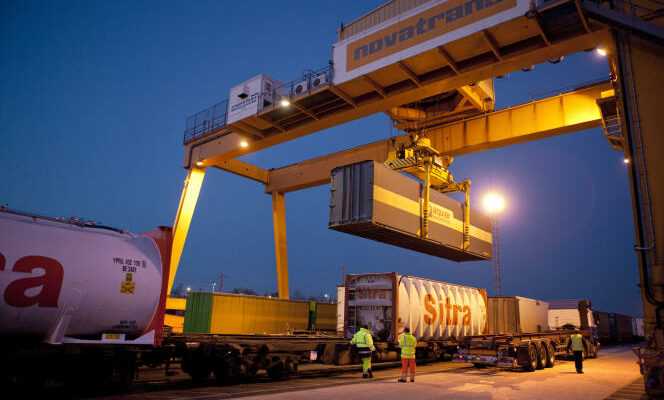Port of Calais, 6.30 p.m., end of April. On this early sunny evening, the Botnia Seaways, a cargo ship which has just arrived from Sheerness (United Kingdom), at the mouth of the Thames, is in the process of being emptied of its one hundred and twelve lorry trailers, which will be parked among dozens of others on the surrounding car parks. Suddenly, preceded by a powerful whistle, the imposing silhouette of a locomotive appears, an incongruous machine in this road universe. It pulls a convoy of around thirty trailers, ie 2,000 tons in motion, reducing the heavy goods vehicles to the rank of vans.
The scene takes place at the multimodal rail-road terminal in Calais, managed by Viia, a subsidiary of the SNCF, which intends to make it the symbol of a revival of rail freight, at the start of the 2020s. Like the splash of a mode of transport crushed for years by the ever-increasing mass of heavy goods vehicles.
A major sign of this tremor, Fret SNCF, the historical freight transport activity of the national company, was financially in balance in 2021. The sick branch of the railway, structurally in decline for years, is today today in the green. This is a first since this activity has been included separately in the SNCF group. And, paradoxically, it was the Covid crisis that put freight back on track. In the panic of the first confinement, when road transport was not always there, the rail did the job.
“The period was the start of the rebound for rail freightconfirms Frédéric Delorme, president of Rail Logistics Europe, the rail freight transport entity of the SNCF, which includes Fret SNCF. One hundred percent of orders were fulfilled in the spring of 2020 and our customers were grateful for the work that was done. » So the whole sector begins to dream of finally shaking up truck market share. Freight can turn history around by achieving the goal that Jean-Pierre Farandou, the CEO of SNCF, summarized in its program “Iron against carbon”, namely to increase rail freight from 9% of goods transport today to 18% in about ten years.
A long descent into hell
The challenge is immense. Because the history of rail freight is first and foremost the chronicle of a major downgrading. Less than forty years ago, a third of goods transited by train and the freight workforce reached 50,000 railway workers. Today, 4,800 people are attached to Fret SNCF. The introduction of competition in 2005 did nothing to reverse the trend, and rather accelerated the collapse of the former monopoly. The litany of major railway strikes (1995, 2001, 2007, 2014, 2018, 2019) has made more shippers, companies that ship goods, give up the train every year.
You have 74.41% of this article left to read. The following is for subscribers only.
